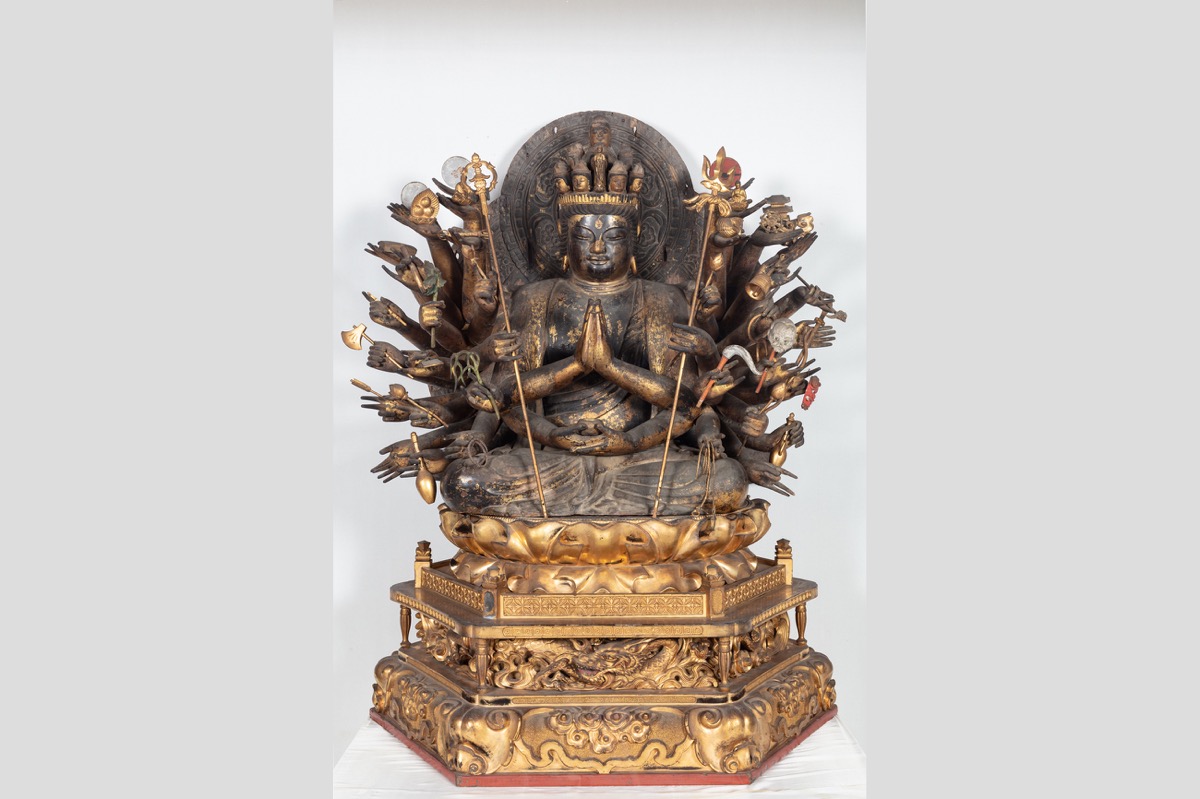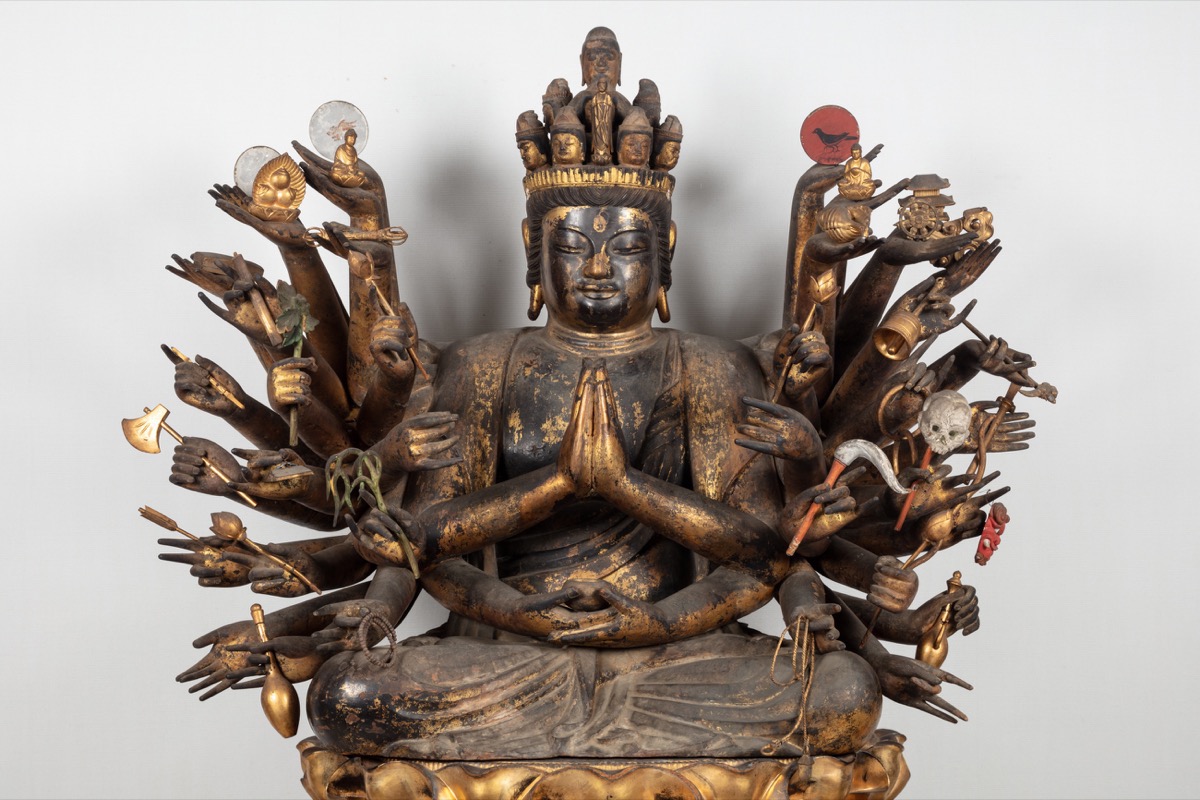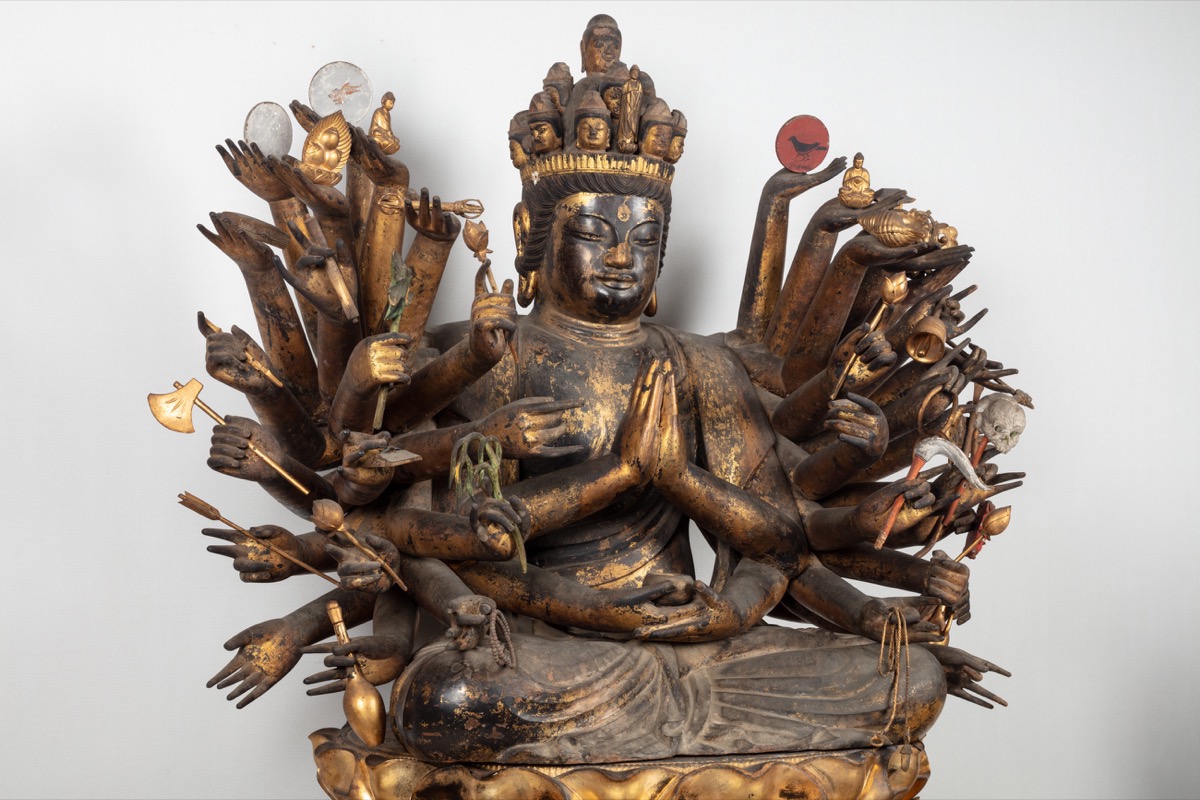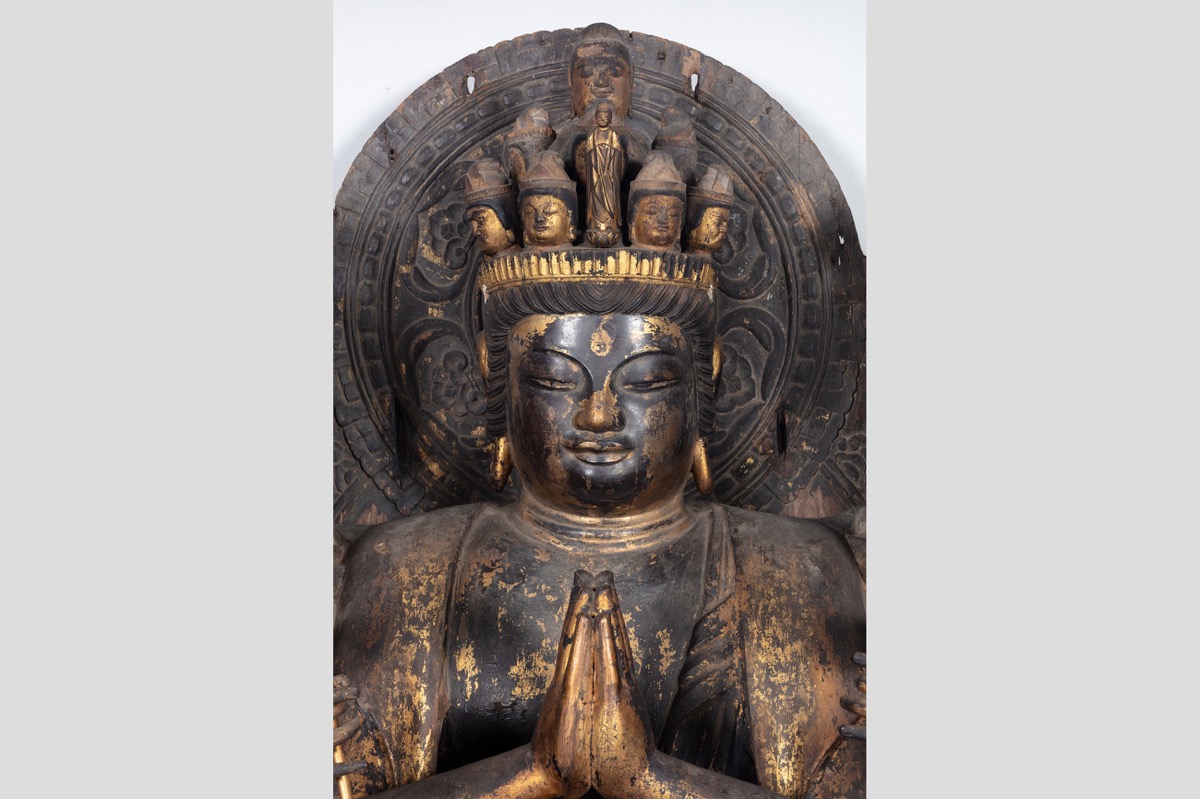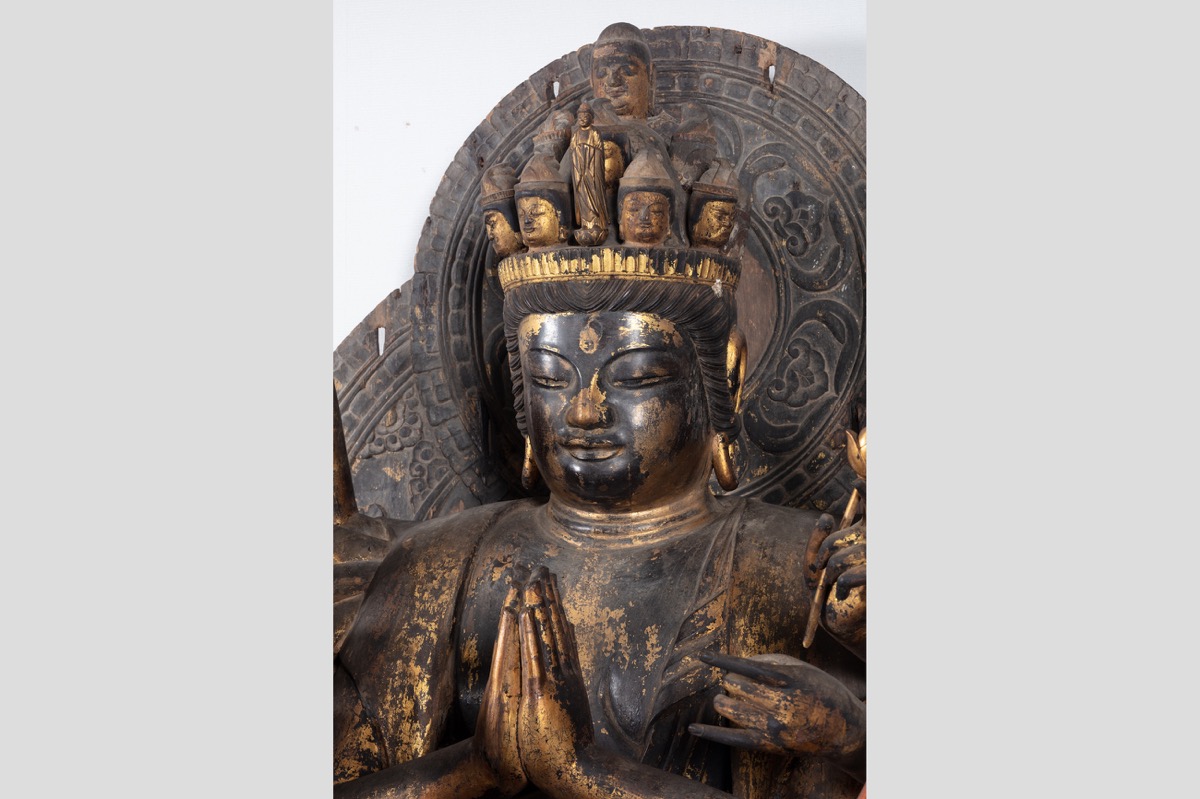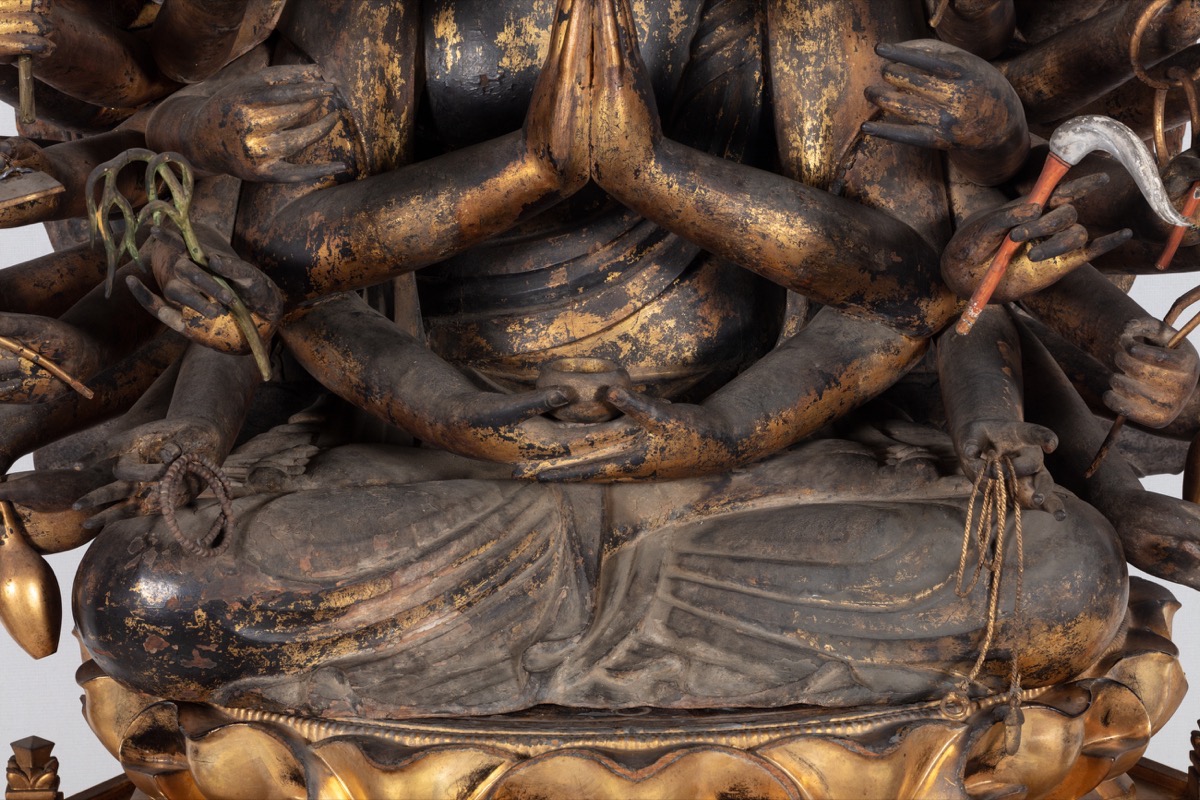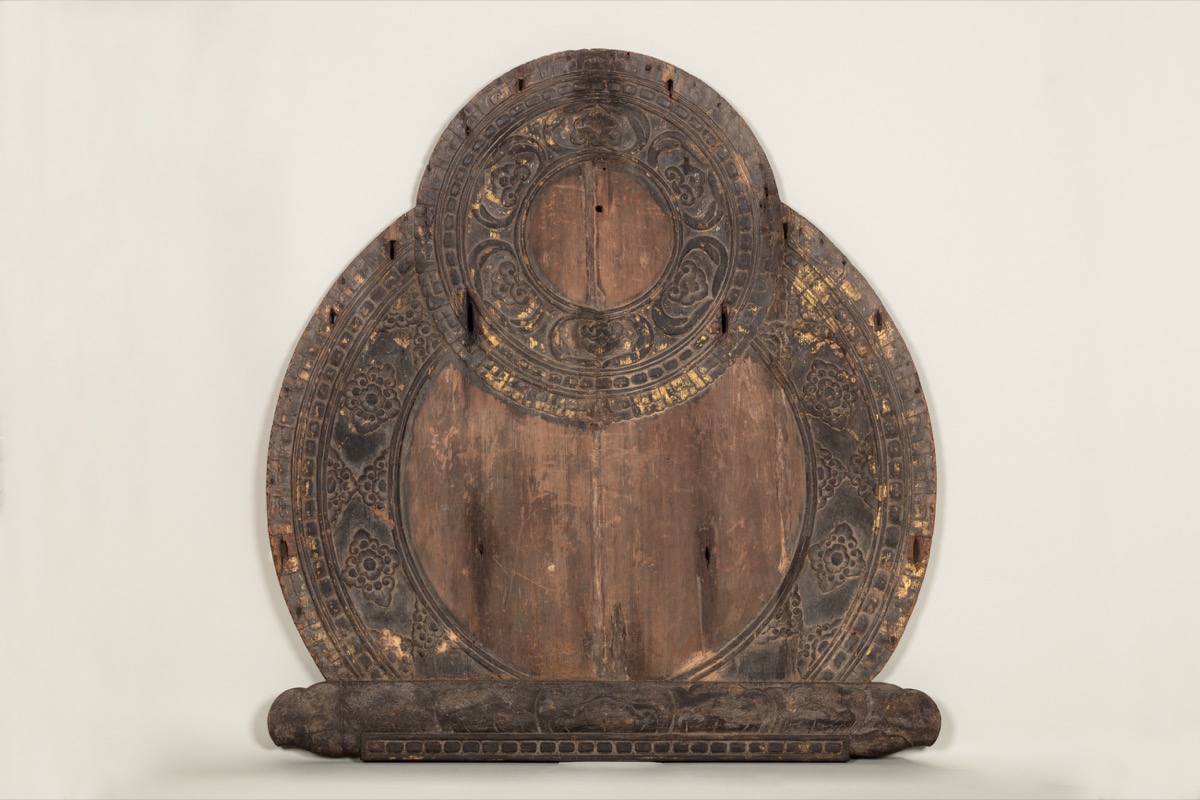Mokuzo Senjukannon ZazoSeated Wooden Thousand-Armed Kannon Statue
| District | Arts and Crafts | Period | ー |
|---|---|---|---|
| Set Content/Set Date | Important Cultural Property(Sculpture)・西暦1955.02.02 | ||
| Owner | Yashimaji Temple | Location | 1808 Yashima-Higashimachi, Takamatsu, Kagawa |
In Buddhism, the Bodhisattva Kannon transforms into all kinds of shapes in order to save living beings. This Eleven-Faced, Thousand-Armed Kannon is one of them, with eleven faces with varying expressions above the bodhisattva's head. The thousand arms are expressed with 42 arms.
The main parts of the head and body of this statue were carved from Japanese nutmeg, and the interior has not been hollowed out.
The sculpting is spectacular, with the supple chest around a thick neck, well-balanced hands, and legs that appear stable. The face, distinct for its rather narrow forehead, plump cheeks, round nose, and thick lips, shows unique sculpting reminiscent of Buddha images created in Sanuki (currently Kagawa Prefecture). The area of clothing below the knees and the folds in the cloth are represented with large and small alternating waves (honpashiki emon, “rippling pattern”). It appears to have been made in the early 10th century, this is a particularly excellent example of Heian sculpture in Kagawa Prefecture.
The fact that all the heads and hands are the originals and that the statue comes with its halo, which represents the light of the Thousand-Armed Kannon, makes this statue extremely rare and valuable.
While the statue was originally enshrined in the Main Hall (Important Cultural Property) of Yashimaji Temple as its principal object of worship, it is currently on display at the Treasure House of the temple.

